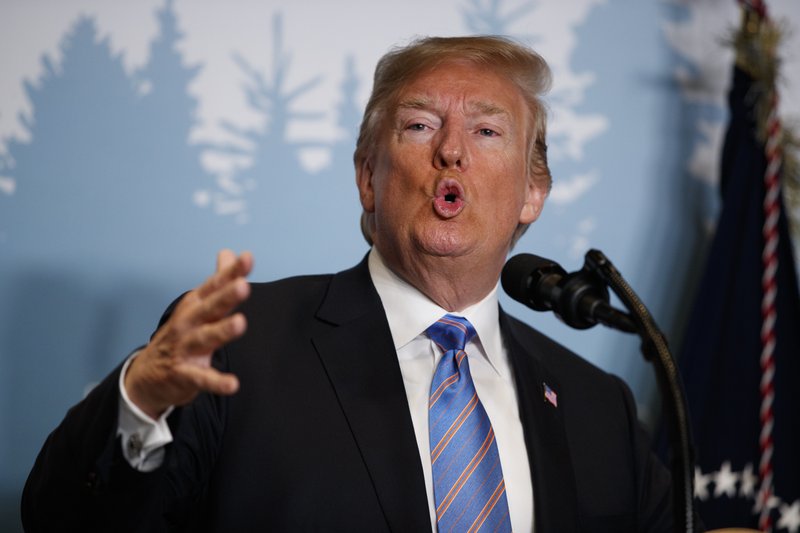Trump threatens China with new tariffs on $200 billion in goods
WASHINGTON/BEIJING: US President Donald Trump threatened on Monday to impose a 10 percent tariff on $200 billion of Chinese goods, prompting a swift warning from Beijing of retaliation, as the trade conflict between the world’s two biggest economies quickly escalated.
In a statement, Trump said he had asked US Trade Representative Robert Lighthizer to identify the Chinese products to be subject to the new tariffs.
He said the move was in retaliation for China’s decision to raise tariffs on $50 billion in US goods, which came after Trump announced similar tariffs on Chinese goods on Friday.
“After the legal process is complete, these tariffs will go into effect if China refuses to change its practices, and also if it insists on going forward with the new tariffs that it has recently announced,” Trump said.
The news sent global stock markets lower and pulled down both the dollar and the Chinese yuan in the offshore market.
China’s commerce ministry said Beijing will fight back firmly with “qualitative” and “quantitative” measures if the United States publishes an additional list of tariffs on Chinese goods, accusing Washington of launching a trade war.
“Such a practice of extreme pressure and blackmailing deviates from the consensus reached by both sides on multiple occasions, and is a disappointment for the international community,” the ministry said in a statement on Tuesday.
“The United States has initiated a trade war and violated market regulations, and is harming the interests of not just the people of China and the US, but of the world,” the ministry said.
If the US becomes irrational and publishes that new list of tariffs, Beijing will take strong countermeasures to safeguard the interests of China and its people, it said.
Lighthizer said in a statement his office was preparing the proposed tariffs and they would undergo a similar legal process as previous tariffs, which were subject to a public comment period, a public hearing and some revisions. He did not say when the target list of Chinese goods would be unveiled.
Washington and Beijing appeared increasingly headed toward open trade conflict after negotiations failed to resolve US complaints over Chinese industrial policies, lack of market access in China and a $375 billion US trade deficit.
On Friday, Trump said he was pushing ahead with a 25 percent tariff on $50 billion worth of Chinese products, prompting Beijing to respond in kind.
Some of those tariffs will be applied from July 6, while the White House is expected to announce restrictions on investment by Chinese companies in the United States by June 30.
“China apparently has no intention of changing its unfair practices related to the acquisition of American intellectual property and technology. Rather than altering those practices, it is now threatening United States companies, workers, and farmers who have done nothing wrong,” he said.
Trump said if China increases its tariffs again in response to the latest US move, “we will meet that action by pursuing additional tariffs on another $200 billion of goods.”
A spokeswoman for the US Trade Representative’s Office said the new list would replace the previous $100 billion list that Trump ordered to be prepared in early April as a response to China’s first round of $50 billion in retaliatory tariffs.
Trump said he has “an excellent relationship” with Chinese President Xi Jinping and they “will continue working together on many issues.”
But, Trump said, “the United States will no longer be taken advantage of on trade by China and other countries in the world.”
According to US data, China imported $129.89 billion of US goods last year, while the US purchased $505.47 billion of Chinese products.
Derek Scissors, a China scholar at the American Enterprise Institute, a Washington think tank, said that means China will soon run out of imports of US goods on which to impose retaliatory tariffs.
He added that China was unlikely to respond to an announcement of tariffs with changes in industrial policies. Those could take a long and painful trade fight.
“As I’ve said from the beginning, China will back off its industrial plans only when US trade measures are large and lasting enough to threaten the influx of foreign exchange. Not due to announcements,” he said.






